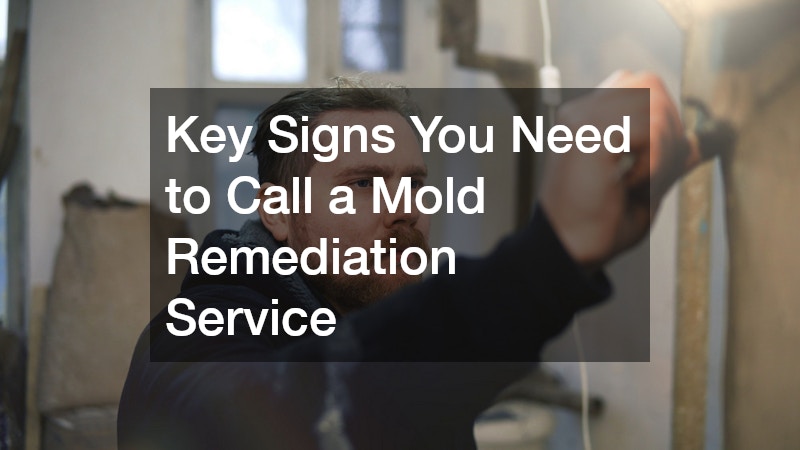Mold is more than an eyesore. It can damage building materials, weaken indoor air quality, and create health concerns if left to spread. While a small spot in a shower can often be cleaned, recurring or widespread growth calls for expert help. Knowing the warning signs lets you act before minor issues become costly repairs. If any of the indicators below sound familiar, it may be time to bring in a professional mold remediation service to assess the problem and restore a healthier environment.
Persistent Musty Odors And Hidden Moisture
A lingering, earthy smell is often the first clue that mold has taken hold behind walls, under flooring, or inside HVAC components. Odors tend to intensify after the home has been closed up or when humidity rises, which suggests spores are active and feeding on damp materials.
If you cannot find a visible source, moisture may be wicking through drywall or accumulating under sinks and appliances. Professional testing and moisture mapping can pinpoint the hidden source so the right fix, not just a deodorizer, is applied.
Visible Growth That Returns After Cleaning
If you scrub dark spots only to see them reappear within days or weeks, the root cause is still present. Household cleaners can bleach the surface, but they rarely address water intrusion, poor ventilation, or contaminated porous materials like drywall and carpet padding. Recurrent growth on baseboards, window sills, or ceiling corners suggests the substrate is saturated or the air is carrying spores from another reservoir. At that point, calling a mold remediation service is wise, because trained technicians can contain the area, remove contaminated materials safely, and correct the moisture pathway.
Unexplained Allergy Or Respiratory Symptoms
Mold can aggravate allergies and asthma, especially in children, older adults, and anyone with compromised immunity. Watch for patterns such as coughing, irritated eyes, sinus pressure, or headaches that ease when you leave the building and return when you come home. While only a medical professional can diagnose health conditions, these recurring symptoms often coincide with elevated indoor humidity or concealed growth. A thorough inspection and, if needed, targeted removal can reduce airborne irritants and help occupants feel better inside the home.
Recent Water Damage Or Humidity Problems
Any time a roof leak, plumbing failure, or sump pump issue occurs, the clock starts ticking. Porous materials can begin supporting mold within 24 to 48 hours if they remain damp. Even without a major incident, indoor humidity above roughly 60 percent can allow spores to colonize drywall paper, wood framing, and insulation. If you have experienced a leak, a musty crawlspace, or a damp basement, bring in a mold remediation service to dry, clean, and monitor the space before growth spreads beyond the original area.
Stains, Warping, Or Peeling Finishes
Brown or black staining on ceilings, rippling drywall seams, and peeling paint near exterior walls are common signs of moisture infiltration. Warped trim, swollen door frames, and soft subfloors around tubs or dishwashers also indicate water is lingering where it should not. These cues often appear well before obvious patches of mold show up on the surface. Investigating the building envelope, plumbing penetrations, and ventilation paths can reveal the source so repairs and cleanup happen together, not in isolation.
Condensation On Windows And HVAC Concerns
Regular condensation on interior window panes, supply registers, or ductwork points to unbalanced humidity or temperature differentials. Water droplets can drip into sills and wall cavities, feeding mold out of sight. Dirty evaporator coils, clogged drain pans, or uninsulated ducts can further distribute moisture and spores throughout the house. An HVAC evaluation, combined with targeted cleaning and air sealing, helps keep the system from becoming both the source and the delivery mechanism for contamination.
A timely response protects your home’s structure and your peace of mind. When odors persist, stains return, or health symptoms track with time indoors, do not rely on surface cleaning alone. Document what you see, control humidity with dehumidifiers or ventilation, and get a professional evaluation. The right mold remediation service will identify the moisture source, contain the affected zones, remove compromised materials, and verify that cleanup was successful. With a comprehensive plan and proper prevention, you can restore a safer, cleaner home and keep future mold issues in check.

